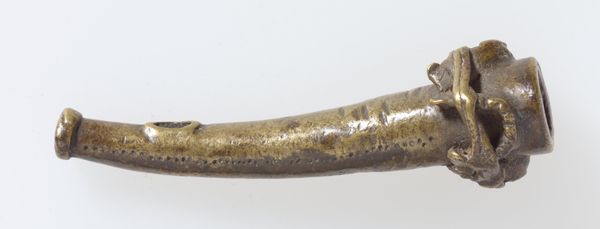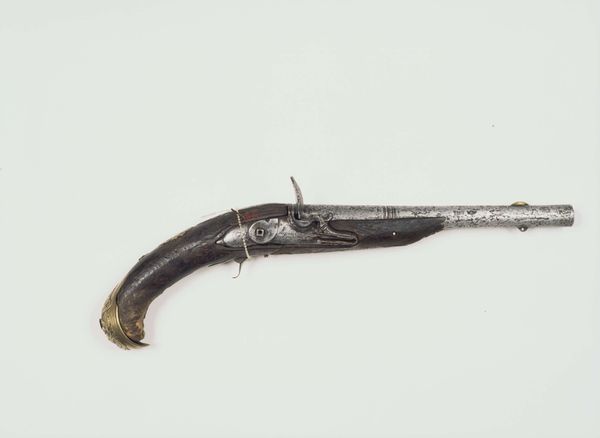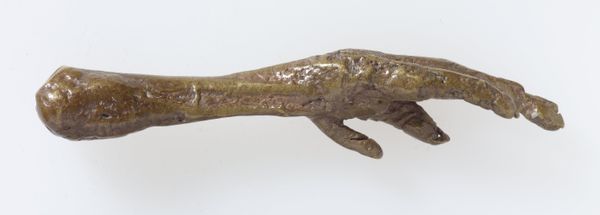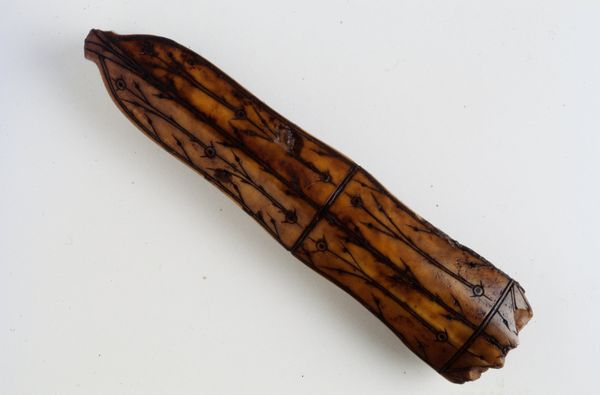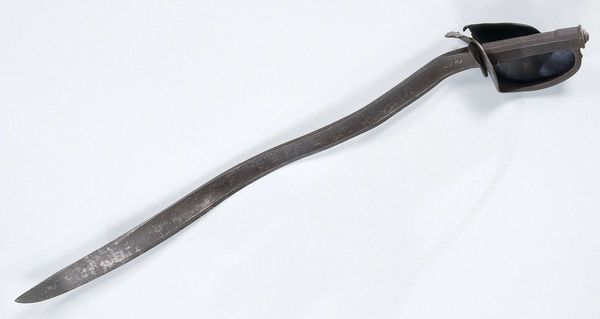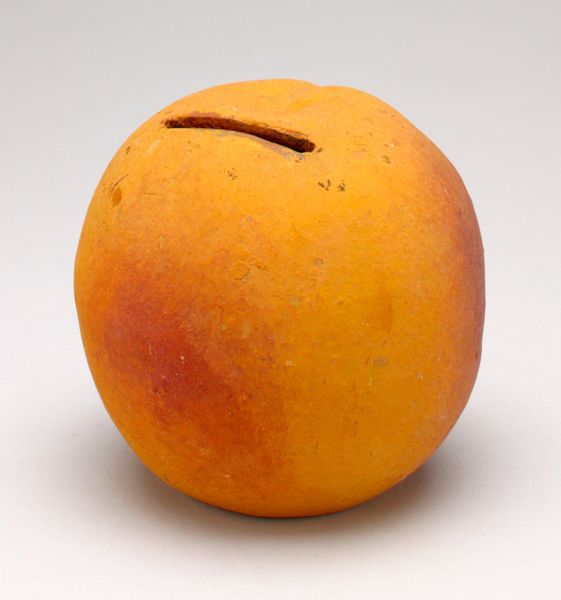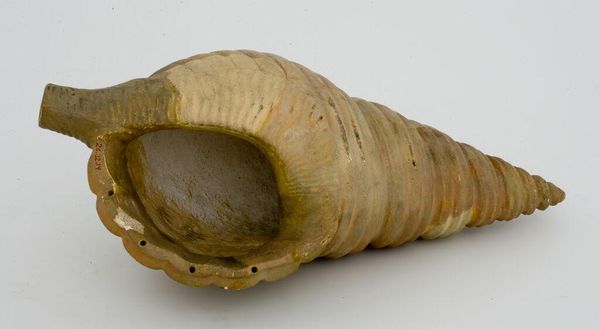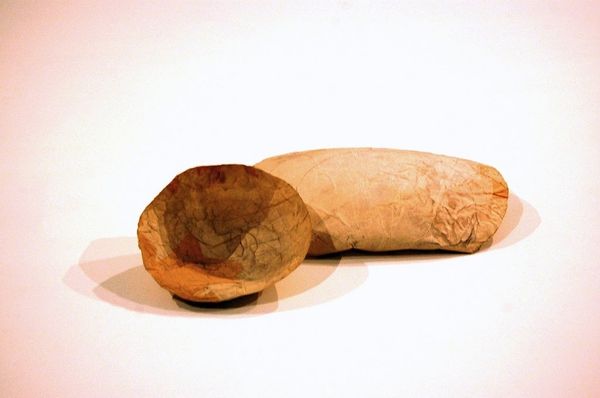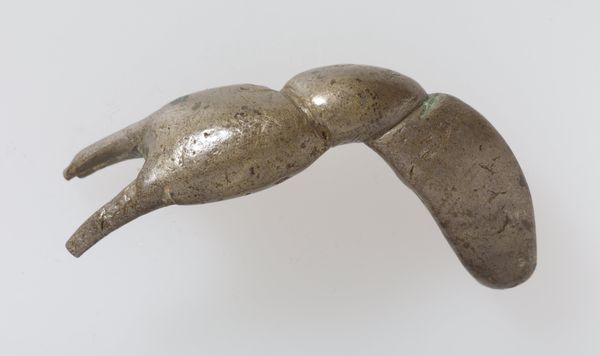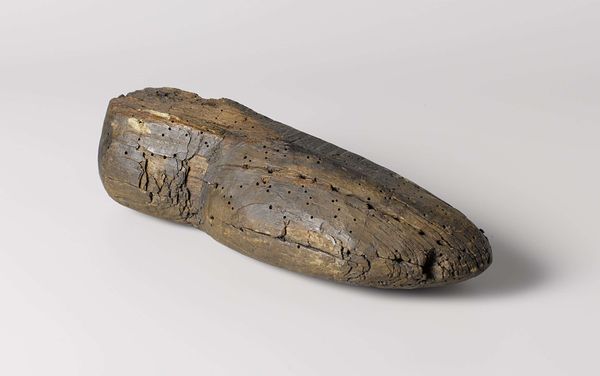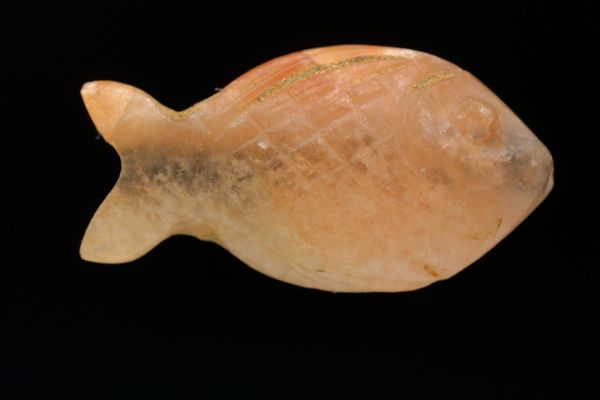
#
egg art
#
ring
#
sculptural image
#
appetizing
#
food illustration
#
stoneware
#
food art
#
watercolour illustration
#
fruit
#
watercolor
Copyright: Modern Artists: Artvee
Curator: It's funny, but I’m instantly struck by how melancholy this image is. An eggplant rendered with such precision, yet somehow… forlorn. Editor: That's an interesting reaction! Let's delve into this artwork; it's called "Baby Eggplant" by Scott Fraser. Now, while we don't have a specific date for its creation, we do know that Fraser is recognized for his hyperrealistic depictions of everyday objects. The tag analysis points to a combination of watercolour and sculptural techniques used in this food art illustration. Curator: Yes, the interplay between the watercolour illustration tag and stoneware… there's a tension there, isn't there? On the one hand, it seems fleeting, delicate—but also… earthy and grounded in materiality. What strikes me is that by elevating this humble vegetable, what does that tell us about society's relationship with the food that we consume or with the visual image? Editor: Precisely. The act of carefully rendering an eggplant using such diverse processes, invites questions about labour. Whose labor? And how valued? Food, often relegated to the domestic or agricultural sphere, is brought into the high art space through meticulous production, and the end product almost turns into a sculptural food image to behold. Curator: It certainly compels us to reconsider what’s deemed worthy of artistic representation and public display. Why is *this* eggplant in a frame and presented? Editor: Good question, that invites to see if we could identify which system is this production part of: Could the display be about food waste reduction in our image-centered culture of visual consumption? Maybe even part of food companies to create new customer interest, because everything seems arranged in this scene. Curator: It challenges the hierarchies, I suppose. We are confronted with a really humble object with simple techniques. Editor: It makes you reflect. The "appetizing" tag hints at consumerist impulses, but it makes you reflect if that can translate as desire to preserve nature as well. Food depiction certainly plays a powerful public role. Curator: Indeed. And in that way, a new way of looking to this beautiful aubergine can open the door to look more closely, and change some cultural structures, even. Editor: Agreed. It makes one think differently about how we make and consume in the twenty-first century.
Comments
No comments
Be the first to comment and join the conversation on the ultimate creative platform.
